Outstanding professional development opportunities offered in 2020
2020 has been a trying year for us all, but there have been some bright spots, including our AATIA general meetings, which, thanks to the miracles of modern technology, we were able to continue holding, despite the pandemic. Last year, our Board of Directors decided to send one member of the Board to the annual conference of the American Translators Association (ATA) to scope out possible topics and presenters for our general meetings. The Board also decided to begin using some of the balance remaining in the Harvie Jordan Fund* to bring in (or, since March, Zoom in) some paid presenters.
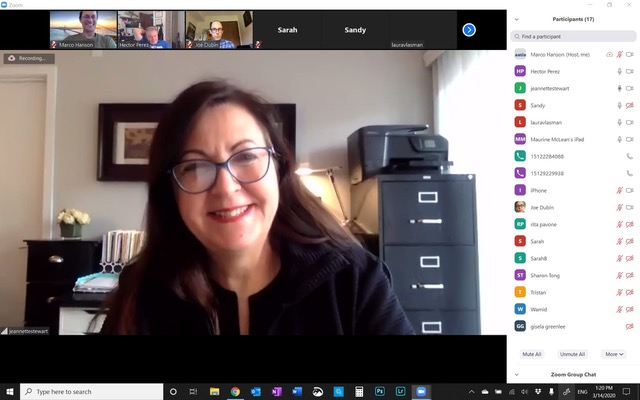
These two decisions have paid off in spades for the AATIA members and guests who participated in our general meetings this year. In January we were treated to “Doing Good Work,” a presentation by Sarah Baiz, based on a presentation given by Nicholas Hartmann at the 2019 ATA annual conference. In March, Jeannette Stewart joined us from California for AATIA’s first-ever virtual meeting. Jeannette, reprising a presentation she had made during the 2019 ATA annual conference, shared information on productivity tools available to language professionals for free.
In May, we had two very practical and useful presentations, “Getting at that Text: Tips for Translating Images, PDFs, and PowerPoints,” and “Understanding Contract Legalese.” Ray Valido, a project manager and desktop publishing specialist for the US State Department, Zoomed in from the Washington, DC, area to offer some helpful advice on working with text found in pdf documents, images, PowerPoint slides and other formats that are often a source of headaches for translators. His tips on using the selection pane in Word or PowerPoint to deal with “the nightmare slide” were especially enlightening.
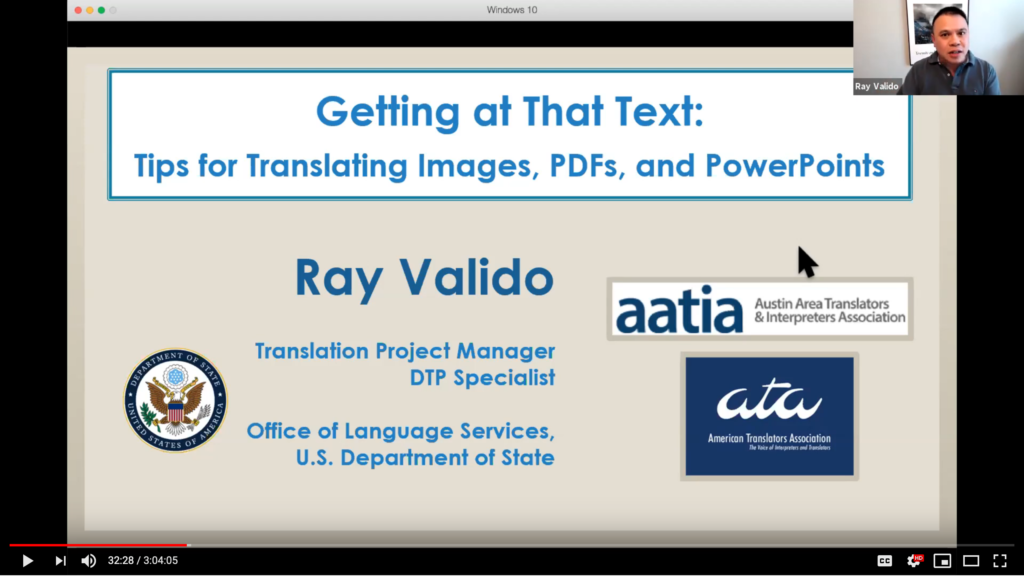
Jamie Peterson, an Austin-based attorney specializing in business law, then gave us a crash course in the basics of contract law with the aim of helping us to understand the terminology found in contracts that we may be called upon to sign in our business dealings. Using several “you be the judge” exercises, she explained what does and does not constitute a binding contractual relationship. She also walked us through what happens and who is responsible when a contract is breached, underlining the importance of a “corporate block signature” for business owners. For freelancers, or independent contractors, she stressed the need to carefully read and ensure that you understand the potential implications of all contractual provisions, including non-compete, non-solicitation, and non-disclosure clauses.
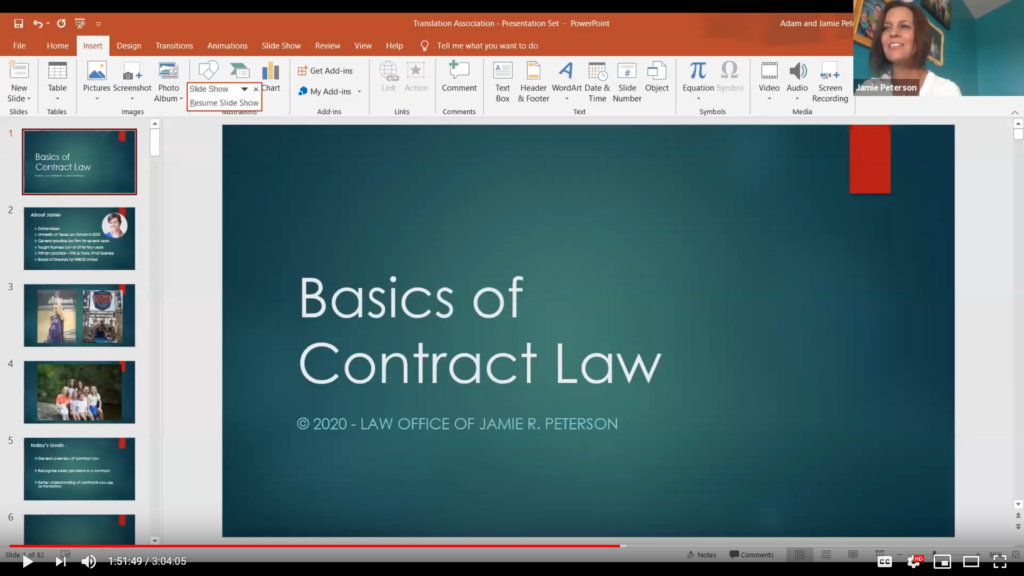
In July, we got to learn about translating in school settings from Kendra Deane, a former teacher and now a translator for the Austin Independent School District. She spoke to us about the opportunities available to translators and interpreters in the education field, including interpreting at open houses and parent-teacher meetings and translating individualized education programs for students enrolled in special education. Kendra also outlined some of the challenges of working in the education field. For interpreters, these include providing unbiased support and keeping emotions down in meetings between school personnel and limited-English-proficiency (LEP) families. For translators, a major challenge is being able to produce large volumes of translation in a very short timeframe (Kendra has been known to turn out as many as 1,700 words per hour, a feat she attributes in part to knowing how to use CAT tools effectively). As to compensation, Kendra pointed out that while working in the education field is not particularly lucrative, it can be very rewarding, personally and professionally.
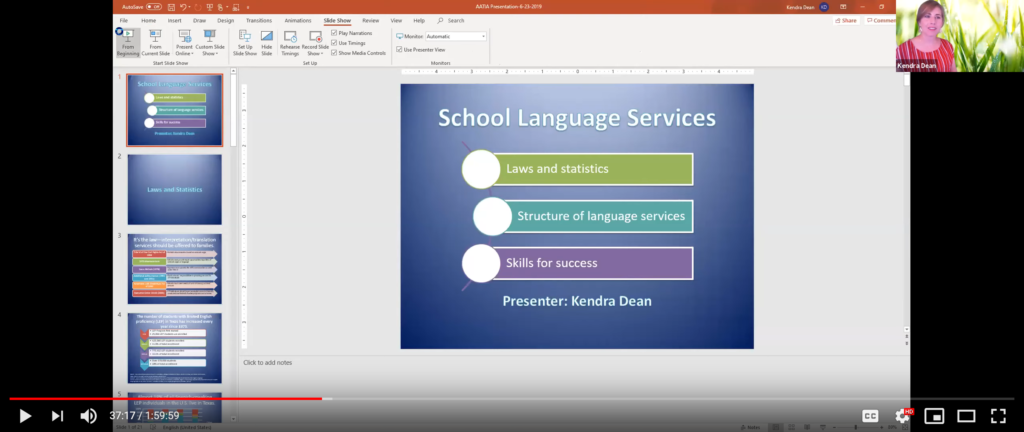
In September, we heard a presentation by Georgina Terán-Manrique on “Localization Essentials for Newbies.” Georgina, a Spanish language manager for the localization team at LinkedIn, explained that localization, also known as internationalization, is the process of translating and adapting software to a target market’s language, culture, and legal requirements. She also pointed out how localization differs from straight translation. Then she gave us a demonstration of the basics of the localization process, highlighting some of the difficulties created by grammatical differences between languages – such as grammatical gender – and lack of context.

After Georgina’s presentation, we were joined by several representatives of the U.S. State Department, who spoke to us about opportunities for linguists at the Department. Joseph Mazza, chief of the Translating Division of the State Department’s Office of Language Services, gave us an overview of the Office’s work and mission, which is to facilitate written and spoken communications with governments and officials of non-English-speaking countries. Joe was joined by Amma Szal, a project manager for the Language Services Office, who outlined the recruiting and testing procedures for translators who work for the State Department, and Reem Nuseibeh, an Arabic-English interpreter, and Patrick Tappia, a Spanish-English interpreter and senior program officer in the Interpreting Division of the Office of Language Services, who talked about the various types of interpreting done by State Department interpreters and the qualifications required.
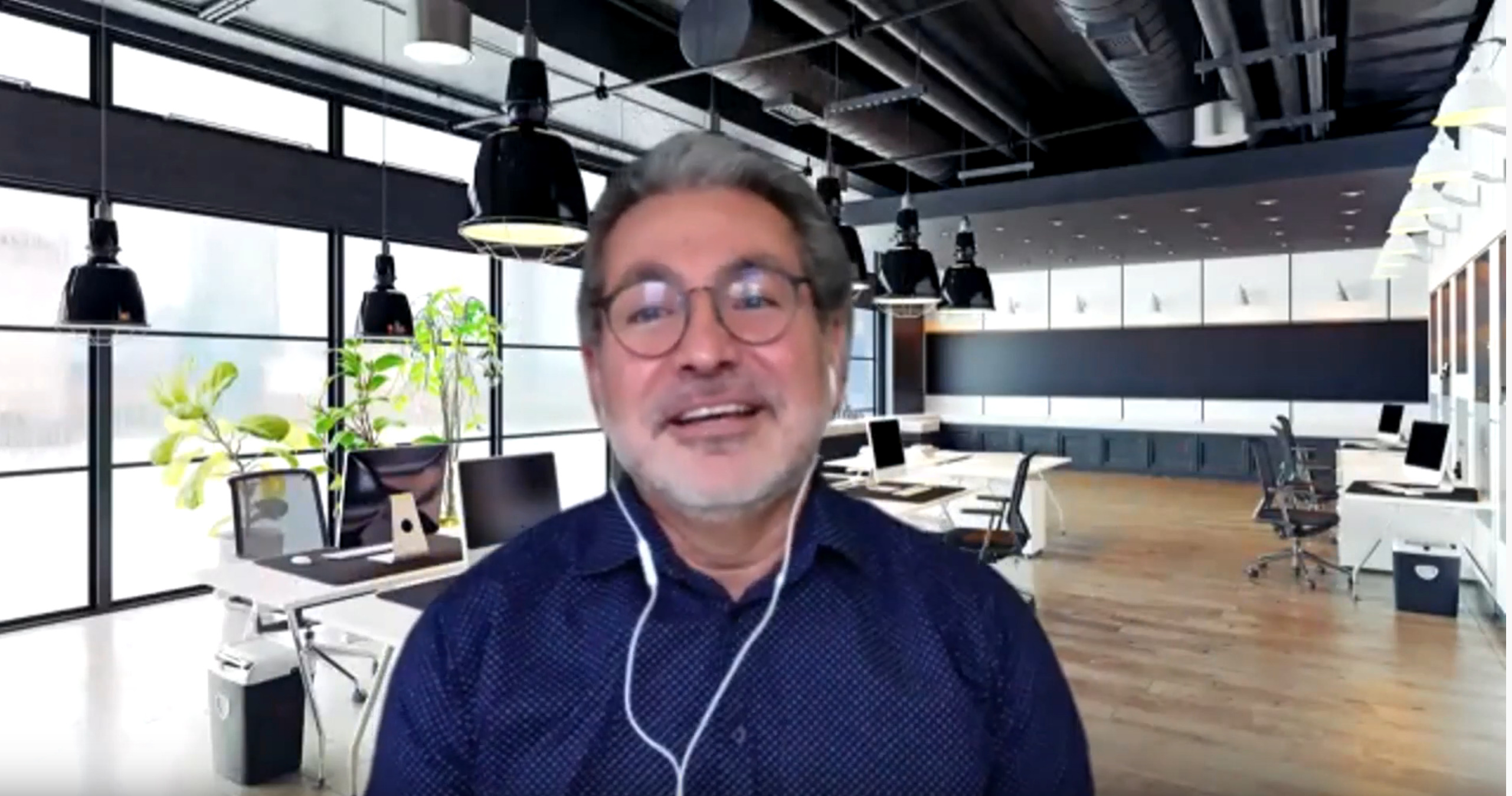
We learned that the Department is mainly interested in hiring translators and interpreters who work in languages of lesser diffusion. It is not currently looking for linguists who work with “UN languages” (i.e., the official languages of the United Nations: Arabic, Chinese, English, French, Russian, and Spanish), except possibly Chinese. However, Amma said, if you are a “master translator in the UN languages,” you might be considered.
At our last meeting of 2020, in November, Briana Stone presented an overview of the US court system at the federal and state levels, including how each handles translation and interpretation rights. Briana is a civil justice attorney in the Legal Access Division of the State Bar of Texas. She also leads the Texas Access to Justice Commission‘s efforts to advance language access in Texas courts. Briana explained how the federal and state courts are organized and outlined the legislation governing access to interpreting and other services to ensure that LEP persons have equal access to justice. She noted that narrow application or misapplication of the laws at both levels, coupled with lack of judicial training and guidance on language access and a shortage of qualified interpreters in some languages, can leave LEP individuals at a disadvantage if they find themselves enmeshed in the US justice system. Briana also pointed out that the interpreter is often the person who knows the most about language access in a courtroom and that interpreters may therefore be called upon to educate their clients and the court about best practices and the applicable laws.
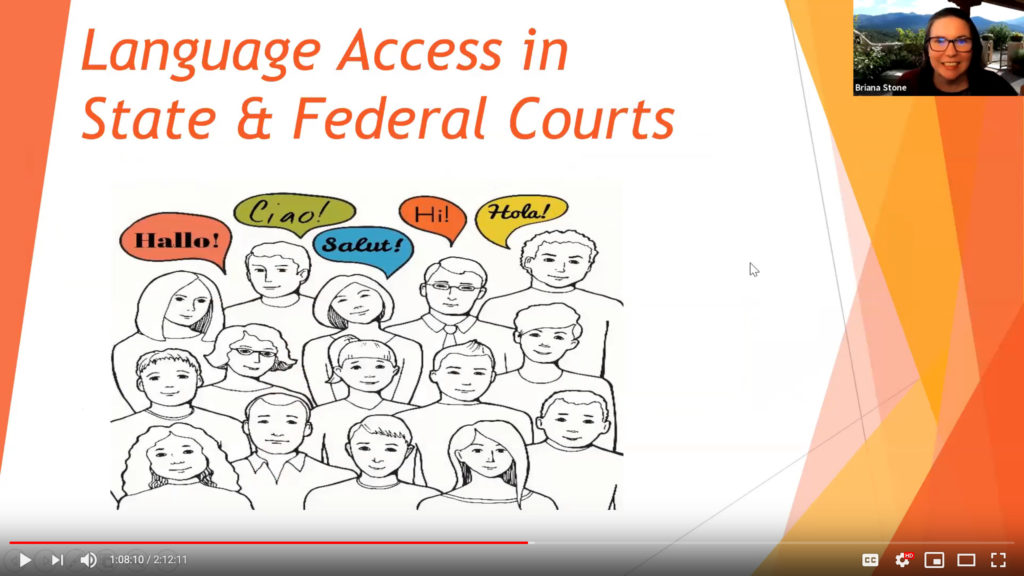
Recordings of all of the above meeting programs and copies of the presenters’ slides and other materials are available to AATIA members in the members-only section of our website.
*The Harvie Jordan Fund was set up to honor the memory of AATIA co-founder Harvie Jordan following Harvie’s death in 2002. The purpose of the fund is to support the professional development of translators and interpreters through scholarships and grants for individual members and sponsorship of workshops, seminars, and other professional development activities.


Comments are closed.